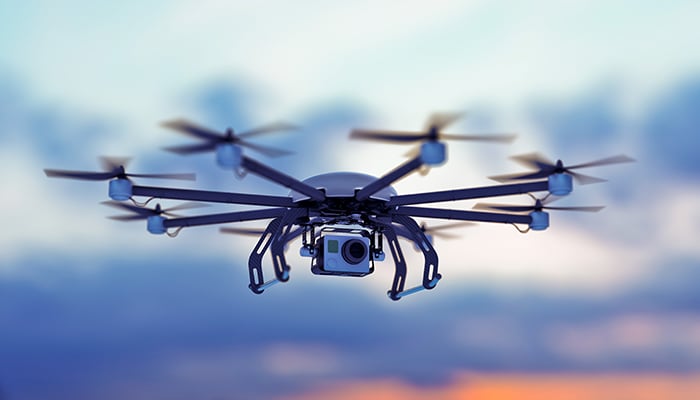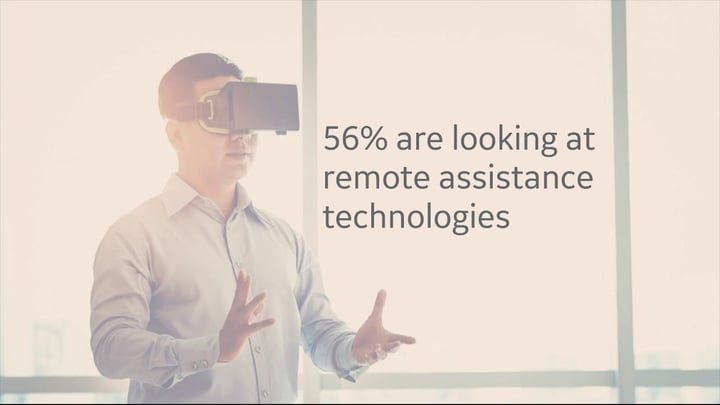The future of the UK drone industry, one of Britain’s prime opportunities for growth, and many other UK-based manufacturing exporters, will be severely threatened once the UK’s eligibility for the EU’s CE accreditation regime expires at the end of...
ARCHIVE FOR THE ‘drones’ CATEGORY
Jan 06, 2022 • News • Brexit • drones • UK • Parts Pricing and Logistics • EMEA • drone major group
The future of the UK drone industry, one of Britain’s prime opportunities for growth, and many other UK-based manufacturing exporters, will be severely threatened once the UK’s eligibility for the EU’s CE accreditation regime expires at the end of December 2022.
Robert Garbett, one of the world’s leading advisors on drone technology and Founder and Chief Executive of Drone Major Group Limited, today warned the UK Government of the need to speed up post-Brexit accreditation and establish a clear pathway to United Kingdom Certified Assessed (UKCA) accreditation ahead of the fast-impending deadline.
VITAL UK INDUSTRIES THAT INCREASINGLY RELY ON DRONE TECHNOLOGY ARE FACING UNCERTAINTY
If an alternative UKCA accreditation scheme is not in place in the next 12 months, UK UAS (Unmanned Air Systems) businesses – including drone manufacturers and operators – risk being unable to trade within the global marketplace in the absence of the necessary new international regulatory accreditation.
This pressing issue, if not addressed with greater speed, will have serious consequences for many UK manufacturers looking to sell their products internationally. The issue is set to be tabled for discussion in the UK Parliament later this month.
Robert Garbett commented: “We must not sleepwalk into this urgent issue. It is essential that the UK takes a clear, committed and consistent approach to the development of CA accreditation, something which would have a significant impact on the aviation and drone industries, and will also impact many others. The UK currently has no system in place for the certification of aviation materials and also drones, and with all CE Certification no longer valid, firms will have to return to EU certification providers to re-certify, at a great cost both financially, and to the detriment of UK PLC. We now face a potential cliff edge threat which requires urgent attention.”
This has huge implications for many vital UK industries that increasingly rely on drone technology, including energy, agriculture, construction and rail.
Prior to Brexit, the UK utilised the (European Conformity) CE mark which ensured full compliance of a product with all applicable European health, safety, performance and environmental requirements. Post-Brexit however, the UKCA (UK Conformity Assessed) mark is now required for goods and products being placed on the market in Great Britain and currently covers most goods which previously required the CE marking, known as ‘new approach’ goods.
From the end of this month (December 2021), the UK will have just 12 months remaining of the ‘transitional period’ to introduce and develop the requisite accreditations to ensure global compliancy of UK products before the upcoming deadline for full compliance on 1 January 2023.
Commenting on the timeline for the accreditation, Robert Garbett continued: “It is essential that a clear roadmap is established for the UK’s accreditation. The process of implementation in itself is already highly complex and, as it stands, it will be very difficult for a certification scheme to be established with United Kingdom Accreditation Service (UKAS) in time for the December 2022 deadline, unless the current pace is speeded up.
“The UK’s departure from CE certification post-Brexit, has created an opportunity for the UK to develop an acceptable means of compliance in line with emerging international standards. It has the potential to allow the UK to look outwardly, facilitating a faster pace of innovation in a move away from the more prescriptive approach taken by the EU’s CE accreditation.
“We must get this right to leverage one of the UK’s biggest opportunities for growth in a technology where if we move fast, we could lead the world.”
Further Reading:
- Read more about Parts, Pricing and Logistics @ www.fieldservicenews.com/parts-pricing-and-logistics
- Read more about the drone industry on Field Service News @ www.fieldservicenews.com/drones
- Read more about the impact of Brexit in the service industry @ www.fieldservicenews.com/brexit
- Learn more about Drone Major Group @ dronemajor.net
- Follow Drone Major Group on LinkedIn @ www.linkedin.com/drone-accelerator/
Jan 14, 2021 • News • Cyber Security • drones • IBM • Parts Pricing and Logistics • EMEA • drone major group
The logistics industry, currently one of the greatest winners in the 2020 pandemic world, is under enormous threat going into 2021 as one of the UK’s prime business sectors is targeted by sophisticated cyber-destructors and intellectual property...
The logistics industry, currently one of the greatest winners in the 2020 pandemic world, is under enormous threat going into 2021 as one of the UK’s prime business sectors is targeted by sophisticated cyber-destructors and intellectual property thieves.
“The logistics sector is at a major crossroad... and the real winners and losers will more accurately be defined in the next couple of years” said Robert Garbett, Founder of Drone Major Group, and one of the world’s leading advisors on the advanced capabilities of unmanned systems (drones).
“This year’s lockdowns and now the Christmas rush of pent-up demand have provided virtually all logistics companies with a rapid accelerator for growth, and most have fared extremely well. But in 2021 and beyond, there will be a massive division between those in the logistics sector who have recognised the need to embrace fast evolving new technologies, and in particular those which are safeguarded against cyber espionage, and attackers targeting their supply chains, and those logistics companies who have simply ridden the wave.”
MODERN LOGISTICS MUST CREATE NEW TYPES OF INFRASTRUCTURE TO ADAPT TO A RAPIDLY EVOLVING LANDSCAPE
Last month’s report by IBM’s ‘threat intelligence taskforce’ highlighted how hackers ‘probably backed by a nation state’(1) appeared to be trying to disrupt or steal information about the key processes to keep the newly approved Covid vaccines cold as they travel from factories to hospitals and doctors' offices. “The potential for disruption of supply chains is enormous” said Garbett and, “until recently, logistics organisations have felt they have been relatively safe... but the stakes are getting higher as the need for more sophisticated logistics services, such as unmanned (drone) conveyance is increasingly in demand.”
The economic significance of the logistics sector is huge. Trade association, LogisticsUK, has confirmed that there are over 194,000 logistics enterprises in the UK, with 2.6 million employed in the wider industry. The logistics sector has a £1 trillion turnover, contributing £130 billion Gross Value Added (GVA) to the UK economy, which is 10.2% of the contribution to the UK non-financial business economy.(2) In comparison, the scale of this industry is far greater than UK construction (3), energy (4) and manufacturing(5) among others.
Garbett added: “Data security at every point in a logistics system is paramount and like any IOT (internet of things) system there are many points which will need protection, and a strong culture of cyber security will need to exist to avoid the inevitable human error and threat from malicious human interference, which are the cause of the vast majority of cyber breaches in any system. Modern sophisticated logistics must create new types of infrastructure on a world stage to adapt to a rapidly evolving threat landscape.
“Drones have been shown to offer a wide range of benefits to logistics operations, providing a cost-effective and environmentally responsible alternative to traditional methods, as well as relieving the burden on our already stretched road traffic system. One of the challenges, however, is the need to adopt drone technology within a disciplined, holistic strategy which supports the organisation and ‘future proofs’ what is put in place. To maintain its global competitiveness, it is now more important than ever that the UK logistics industry recognises the speed of drone technology advancement, embraces it, innovates, and stays ahead of the hackers.”Further Reading:
- Read more about Parts Pricing and Logistics @ www.fieldservicenews.com/parts-pricing-and-logistics
- Read the UK Logistics Report 2020 @ logistics.org.uk/logisticsreport
- Learn more about Drone Major Group @ dronemajor.net
- Read the IBM X-Force Threat Intelligence Index @ www.ibm.com/xforce-threat-intelligence-index-map/
- Follow Drone Major Group on LinkedIn @ www.linkedin.com/drone-accelerator/
May 04, 2020 • Features • future of field service • drones • UK Drone Delivery Group • Parts Pricing and Logistics
Is it time for a reality check when it comes to drones and service? Mark Glover speaks to Robert Garbett from the UK Drone Delivery Group who says mid-mile delivery might be possible but we're a long way from Amazon delivering from above.
Is it time for a reality check when it comes to drones and service? Mark Glover speaks to Robert Garbett from the UK Drone Delivery Group who says mid-mile delivery might be possible but we're a long way from Amazon delivering from above.
Think drones and you probably think of small, multi-rotor objects, when in fact according to the International Organisational Standardization’s (ISO) definition, it’s actually, “Any unmanned system that is autonomously or remotely controlled.”
So this could include: any ground vehicle, any air vehicle, any boat, any ship, any surface sub-sea system, any space system; in fact any hybridization of the above which is remotely controlled or does not have a pilot sitting on board is technically a drone.
POTENTIAL IN Field Service Management
“The image you’ve got in your mind is so wrong. It’s definitely not just a small, flying thing,” says Robert Garbett, the author of that ISO definition and a drone industry expert who’s explaining to me how the technology goes far beyond what we see buzzing in the air. “Once you re-approach the whole topic from that perspective, it opens it out into a far more expansive, exciting and beneficial product. A tiny, remotely controlled spider-shaped air drone really can’t do very much on it’s own but as part of an integrated system with autonomous control, it becomes much more powerful.”
However, drones were airbound in the early 90s, used extensively and effectively for the first time in the Gulf War. In the Spring of 1991, an article appeared in Airpower Journal, penned by Captain P.Tice of the US Air Force. His piece, Unmanned Aerial Vehicles: The Force Multiplier of the 1990s, centered around the dwindling number of army personnel and how Unmanned Aerial Vehicles (UAVs) - or drones – could effectively plug the gap.
In the piece Captain Tice said: “When used, UAVs should generally perform missions charecterised by the three Ds: dull, dirty and dangerous.” Now, this was written in the context of military operations: long-term endurance missions that could last several days (dull); the detection of chemical agents (dirty); and reconnaissance behind enemy lines (dangerous), so their use in this instance is very different to delivering an Amazon package, or the delivery of a spare part, but ultimately its purpose is to remove the human from a process.
One could argue service is going in the same direction. The human influence is becoming less as self-diagnosing assets, remote technology and big data gradually impede on an engineer’s role. Will drone assistance be part of their eventual demise?
There’s still some way to go before we see autonomous robots donning overalls and popping round to fix your boiler, but in other sectors such as the airport industry, the influence of drones is already being felt and, according to Garbett, has further potential.
“The service sector in the airport system is huge and a lot of it can be done via autonomous systems or remotely controlled systems: Baggage handling for example,” he says. “The technology could eliminate the need for human beings to be airside increasing security and the efficiency of baggage handling. It could also eliminate the health and safety risks associated with human beings throwing bags around all day.”"In 1865 a spluttering, noisy vehicle with four wheels was an alien…as…well…a drone in 2020..."
Garbett is Chief Executive of Drone Major Group, a specialist consultancy advising on the application of drone technology working with customers who want an independent and expert guidance on what is possible, where to procure what they need and how to implement it safely and effectively. In 2018, he founded the UK Drone Delivery Group where over 300 members seek to lobby the UK Government in establishing a clear path to a UK-wide commercial drone industry.
Last month the group published a white paper (currently out for consultation) calling for the creation of long term drone testing areas, a significant step that could speed up the process of acceptance. He does however acknowledge the process is a long one, an evolution almost, referencing regulation in the automotive industry as a blueprint. “Right from the start, you could do what you wanted [when driving] because there were no regulations. Then the regulations started to come in, the first one meant you had to get out of your car at a junction, wave a red flag as you crossed just in case you killed a horse…” He pauses for a moment, “I believe that happened because one horse was killed which is a great example of over regulation.”
I laughed at this. It sounded ridiculous but online investigation revealed 1865 Locomotive Act enforcing a top speed of two miles per hour when passing through towns. The regulation was passed to protect horse and cart, the primary form of travel at the time, where motorists, according to the legislation were expected to “carry a red flag constantly displayed, and shall warn riders and drivers of horses of the approach of locomotives, and shall signal the driver thereof when it shall be necessary to stop, and shall assist horses, and carriages drawn by horses, passing the same”.
It seems ridiculous now, but Garbett’s comparison is a salient one. In 1865 a spluttering, noisy vehicle with four wheels was an alien…as…well…a drone in 2020. In both contexts however, concerns are fueled around safety, taking well over 100 years of further regulation and development before driving became even remotely safe, or less dangerous.
Yet as recently as the 1970s deaths at the wheel were still remarkably high, it took another layer of robust regulation, primarily around seatbelt use to make a dent in the grim statistics. In terms of an evolution, 100 years is more than enough time for change to happen.
Is this the approach then for drone commercial use in the UK? In the group’s white paper the scattering of drone testing areas are cited as ‘sandboxes’, although Garbett prefers Technical Evolution Areas static areas that, he says aren’t really there to purely test. “They’re there to take a thing from concept to operational deployment and beyond,” he explains, “and through that learning curve, and to accelerate that learning curve upwards so we really can get the benefit that we currently get from cars. So you link the technology areas and link them across the country and start in safe areas first.”"We are going to turn this into a technology evolution. Somewhere in the UK where we are starting to deliver parcels, mid-mile, depot to sub-depot.”
The press release accompanying the white paper cited a Barclays’ report valuing the drone market close to $40 billion by 2023 so perhaps its evolution will be quicker if these figures transpire, although the driver lies not in B2C delivery (the idea that Amazon Drones will be dropping parcels from the sky is, according to Garbett feasible but a long way away, “There’s no way you’re going to have sufficient infrastructure and the depth of availability of airspace and the durability of batteries to have a small air drone delivering things to my balcony.”) but in terms of service and logistics, value lies not in last mile delivery but the mid-mile to depots, where the final leg of the journey to the warehouse or factory could take be fulfilled by an autonomous vehicle that trundles into the building carrying the spare part.
Garbett’s knowledge in this area is refreshing and it’s good to hear clarity on a topic that’s been shrouded in mystery, perhaps skewed by Amazon’s glimpse into their own drone programme, and perceived – wrongly – as that “small, tiny flying object”. But what about a watertight use-case for the technology’s commercially? How far away are we from that?
Garbett eludes to a project he’s working on around mid-mile in delivery and logistics. Run in tandem with a company he’s unable to mention the study has entered – encouragingly - into the feasibility stage. “We are going to turn this into a technology evolution,” he enthuses, “somewhere in the UK where we are starting to deliver parcels, mid-mile, depot to sub-depot – live and commercially.”
And the next step? I ask? What we need are companies like your audience to come forward and get involved. The benefits are there, the technology is there and the will from Government to make this happen is also now there...what we need now is forward thinking companies or trail blazers to come forward so that we can assist them to realise the future.
Over to you then reader and remember, please try to keep that ISO definition in mind. There’s more here than a buzzing spider thing.
Further Reading:
- Read more about drones in field service @ www.fieldservicenews.com/drones
- Read more about the latest use of technology in field service @ https://www.fieldservicenews.com/technology
- Follow Robert Garnett on LinkedIn here.
Apr 17, 2020 • News • future of field service • drones • Last Mile • UK Drone Delivery Group
A whitepaper from the UK Drone Delivery group says implementing testing grounds for the technology could accelerate a potentially successful UK drone industry.
A whitepaper from the UK Drone Delivery group says implementing testing grounds for the technology could accelerate a potentially successful UK drone industry.
The UK Drone Delivery Group says a mass-participation commercial drone testing programme would be a significant step in bringing the drones or Unmanned Aerial Vehicles (UAVs) to the country's skies.
In a recently published white paper the group, made up of 300 senior leaders, calls for the development of new testing grounds which it says will contribute to the UK becoming a world leader in the drone industry.
Service delivery
The publication of the white paper comes as the use of UAVs for commercial purposes such as parcel and service deliveries continues to be plagued with issues around legislation and regulation.
Currently UAVs operating Beyond Visual Line of Site (BVLOS) require permission from the UK Civil Aviation Authority (CAA) to operate. There is also ambiguity on Vertical Take-Off and Landing (VTOL) and the development of an Unmanned Air Traffic Management System (UTM) - Air Traffic Control for drones - continues.
The group formed in 2018 by drone industry expert Robert Garbett is ultimately seeking to agree on a solution that covers all BVLOS, VTOL and (UTM) issues and to eventually lobby government in establishing a clear path to a UK-wide commercial drone industry.
Garbett says implementing the could bring substantial benefits to the country but indicated the need for testing areas needed to happen swiftly. "Facilitating a world leading UK commercial drone industry will bring immense benefits to UK plc, driving innovation, wealth creation and employment opportunities right across the economy," he said.
"...we need to act now. We are keen to identify new testing grounds to be used for take-off and landing, ideally including airports and airfields, but also forests, remote coastal areas and ports through to residential areas and other dense urban environments."
The whitepaper will now undergo a period of consultation followed by a review with full completion expected by the end of June. A draft of the white paper can be found here, which includes a facility for comments. Feedback is required by the 31 May.
In service, the use of drones has been discussed as a way to assist in final-mile delivery particularly in traffic-dense urban areas. Amazon have been hinting at a drone delivery service since 2013. Amazon Prime Air was showcased at last year's re:MARS conference but it remains grounded due to aviation regulations.
Feb 24, 2020 • News • future of field service • drones
Companies create innovative solutions to complex problems for enterprise users.
Companies create innovative solutions to complex problems for enterprise users.
Parrot, the drone group, announced it is partnering with RIIS, a leading provider of mobile app, web development and IT consulting services, to develop custom applications of artificial intelligence for Parrot’s popular ANAFI drone platform. Parrot and RIIS are focused on exploring the use of artificial Intelligence and computer vision technology, combined with drone data capture, to solve countless industry challenges using an efficient and cost-effective approach.
To help demonstrate the promise of this technology and allow developers to start creating innovative apps, Parrot and RIIS have released a technical whitepaper, which provides step-by-step instruction to add AI and computer vision to the ANAFI Drone using Parrot’s open source Ground SDK.
"We are excited to explore the immense capabilities AI and drones will deliver to our clients through our ongoing partnership with RIIS,” said Jerome Bouvard, Parrot Director of Strategic Partnership. “At Parrot, we are always looking for innovative solutions to solve for our enterprise partner’s every-day pain points.”
Parrot and RIIS are actively exploring use cases which could include municipal use of drones for assessing parking lots, public parks, and streetlights; crowd monitoring; warehouse inventory counting; automated inspection of cell phone towers and solar panels; property surveillance for real estate professionals and developers, and much more. This technology is expected to significantly enhance the often-tedious processes required to complete professional projects across a variety of industries and sectors.
“Our recent collaboration with Parrot perfectly illustrates the immense potential of developing apps for Parrot’s ANAFI drone platform,” said RIIS CEO and Founder Godfrey Nolan. “Leveraging the power of AI and machine learning apps with Parrot drones promises to provide previously impossible solutions to costly and time-consuming challenges.
Through its SDK Partner program, Parrot is working to create a global ecosystem of drone apps to serve the unique and ever-evolving needs of its enterprise and professional users. Through this program, Parrot is working with partners, like RIIS, to create and bring to market new applications, software and hardware that seamlessly integrates with Parrot ANAFI and ANAFI Thermal drones.
Feb 18, 2020 • News • future of field service • drones
UK Drone Delivery Group makes urgent ‘call to action’ for property owners and influencers to provide testing areas for drones - to prevent ‘bottleneck to growth’...
UK Drone Delivery Group makes urgent ‘call to action’ for property owners and influencers to provide testing areas for drones - to prevent ‘bottleneck to growth’...
One of the UK’s leading drone experts today urged British property owners and business leaders to leverage the opportunity of their under-used land for drone testing, to help accelerate the rate of growth of the UK drone industry, in the face of what he described as ‘an emerging ‘bottleneck’ to growth’.
Robert Garbett founder of the UK Drone Delivery Group, which is the first industry initiative to provide guidance on the steps required to enable accelerated commercialisation of the UK Drone Industry, stated “There is a current unnecessary ‘bottleneck’ in the evolution of the drone industry and this primarily lies in the lack of controlled testing locations which can provide trial areas and safe environments to accelerate the development of drone technology, help to shape its standards, and ensure appropriate but non constricting regulations”.
He commented “The British Government has played a constructive role to date and the UK is a world leader in drone technology… but to stay ahead in this fast moving game, then business, local authorities, police, fire & rescue services and even members of the public, must work together in a partnership of participation and cooperation.
Examples of desirable drone technology testing locations include not only large airports and aerodromes that may already be approved by the Civil Aviation Authority, but also forests, remote coastal areas and ports, through to residential areas and other dense urban environments. Testing will need to include everything from simple potential drone tasks such as parcel delivery, to much more complex applications such as smart motorway monitoring, law enforcement rapid response and search and rescue.”
The economic benefits offered by drone technology are estimated to be massive, with significant growth expected to accelerate across surface, underwater, air and space, as well as emerging hybrid drone applications. In November 2019, analysts at Barclays predicted that the commercial drone market could grow tenfold from $4bn in 2018 to $40bn in five years, resulting in efficiency cost savings of some $100bn… and these predictions relate to solely air drones. If you add on the fast-growing possibilities for surface, underwater or space drones then the potential growth is substantially greater.
“However,” says Robert Garbett “these predictions of the astonishing potential for growth, are dependent upon the business community and wider public recognising the important part they can play regarding potential testing locations and trial areas.
“The opportunity for the commercial drone market is vast, but with such a fast-growing emerging technology we have to ensure we act quickly, lest our ambitious international competitors overtake our lead.
“My ‘call to action’ is to say that I’d like to hear from those who feel they can contribute to this aspect of this exciting fast growth industry, which is expected to be of vital future importance to UK plc.”
Robert Garbett’s ‘call to action’ and expansion of Drone testing in the UK comes a few days before the House of Lords debates a Government bill on Monday 10 February to update the licensing regime for airspace use, together with greater police enforcement power to ensure safe and responsible use for drones.
Those interested in participating in the UK Drone Delivery Group’s initiative to provide testing areas for drones should contact: https://www.dronemajorgroup.com/drone-delivery-group
Dec 20, 2019 • News • future of field service • drones • Final Mile • ISO
World’s first ISO approved drone standards have been announced, possibly impacting final mile services.
World’s first ISO approved drone standards have been announced, possibly impacting final mile services.
Oct 29, 2019 • Features • Future of FIeld Service • drones • Mark Glover • Last Mile • Key Performance Indicator
A few years back Amazon CEO Jeff Bezos declared on US National TV that he would be investing in Prime Air a delivery network that would utilise drones to deliver packages to their customers. At the time many cynically argued that it was a fanciful...
A few years back Amazon CEO Jeff Bezos declared on US National TV that he would be investing in Prime Air a delivery network that would utilise drones to deliver packages to their customers. At the time many cynically argued that it was a fanciful notion designed to gain Amazon 16 minutes of prime-time coverage and nothing more. But is the idea really so far-fetched? Could delivery drones prove to be an answer to traffic congestion when delivering spare parts in urban areas?
Mark Glover takes a look to see what’s on the horizon.
Mar 06, 2018 • video • Features • AGeing Workforce • AR • Artificial intelligence • Future of FIeld Service • Kieran Notter • research • Research • drones • IoT • servicemax
Kris Oldland, Editor-in-Chief, Field Service News and Kieran Notter, Director, Global Customer Transformation, ServiceMax from GE Digital explore the findings of an exclusive independent research conducted by Field Service News and sponsored by...
Kris Oldland, Editor-in-Chief, Field Service News and Kieran Notter, Director, Global Customer Transformation, ServiceMax from GE Digital explore the findings of an exclusive independent research conducted by Field Service News and sponsored by ServiceMax from GE Digital.
In this excerpt from the full one-hour long webcast, Oldland and Notter discuss both the challenges and opportunities of an ageing workforce within the field service sector and assess whether there is any substance to fears that we are facing an ageing workforce crisis.
Want to know more? The full webcast PLUS an exclusive report based on the findings of this research is available for Field Service News subscribers.
If you are a field service practitioner you may qualify for a complimentary 'industry practitioner' subscription. Click here to apply now!
Be social and share













 Field Service News is published by 1927 Media Ltd, an independent publisher whose sole focus is on the field service sector. As such our entire resources are focused on helping drive the field service sector forwards and aiming to best serve our industry through honest, incisive and innovative media coverage of the global field service sector.
Field Service News is published by 1927 Media Ltd, an independent publisher whose sole focus is on the field service sector. As such our entire resources are focused on helping drive the field service sector forwards and aiming to best serve our industry through honest, incisive and innovative media coverage of the global field service sector.
Leave a Reply